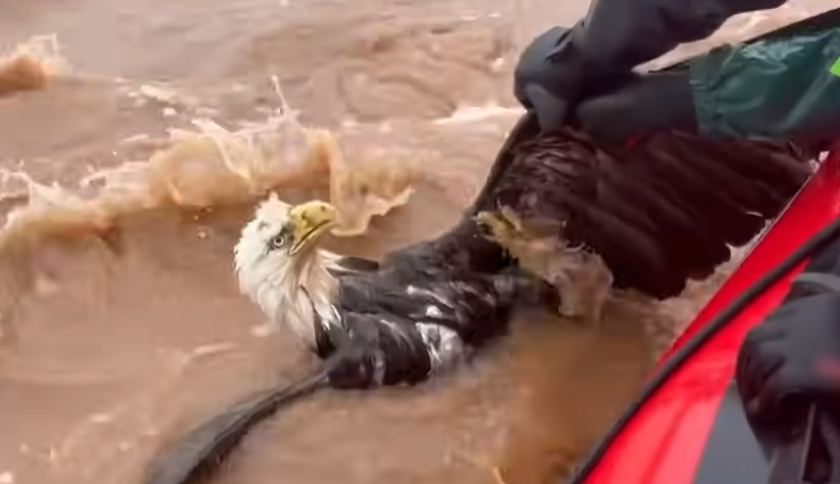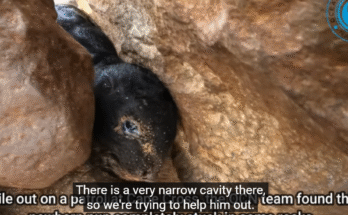
When an eagle becomes trapped in water, every second counts. These powerful birds are strong swimmers, but their heavy feathers can quickly become waterlogged, leaving them exhausted and unable to lift off. Rescuing an eagle in this situation requires training, strategy, and extreme caution to protect both the bird and the rescuers.
The rescue begins with assessment. Responders observe the eagle from a safe distance to determine its level of distress, its location, and whether the water conditions—such as currents, temperature, or waves—pose immediate danger. Eagles that are too tired to paddle may begin sinking, so rescuers move quickly but carefully.
To approach the bird, trained wildlife personnel typically use a small boat or kayak. They avoid creating large waves that could overwhelm the struggling eagle. As they draw nearer, rescuers speak softly or stay silent to avoid causing panic. A frightened eagle may thrash or dive, increasing the risk of drowning.
Specialized equipment is key. Long-handled nets or soft rescue blankets are used to gently scoop the bird from the water. Rescuers keep the eagle’s wings close to its body to prevent flapping, which can cause injury. Once safely in the boat, the bird is immediately wrapped in dry towels or blankets to preserve body heat—hypothermia is a major danger for waterlogged raptors.
After reaching shore, the eagle is transferred to a wildlife rehabilitation center for evaluation. Veterinarians check for broken bones, muscle strain, water inhalation, and feather damage. Because wet feathers lose insulation and flight capability, the bird must be dried fully and monitored closely. Rehabilitation may include rest, warmth, rehydration, and time in a flight enclosure to rebuild strength.
Only when the eagle is strong, alert, and able to fly again will rescuers release it back into the wild—restored, revived, and ready to soar once more.


